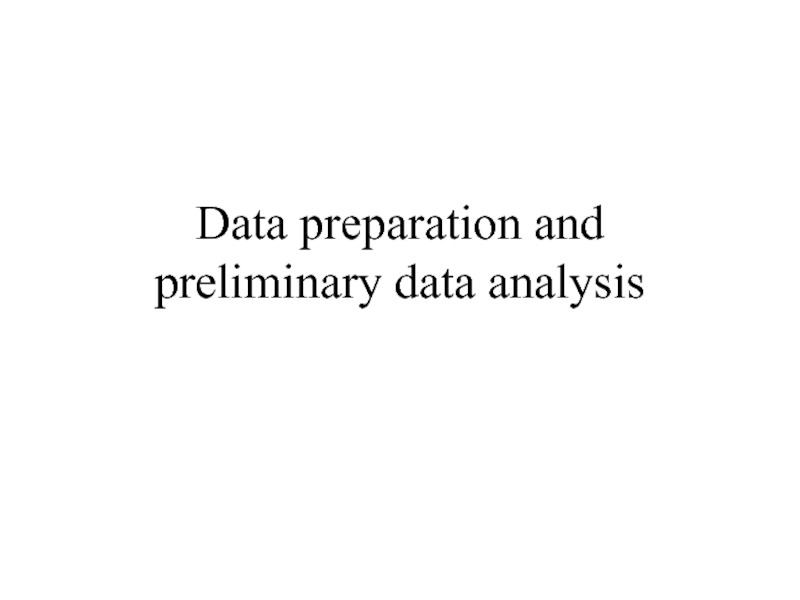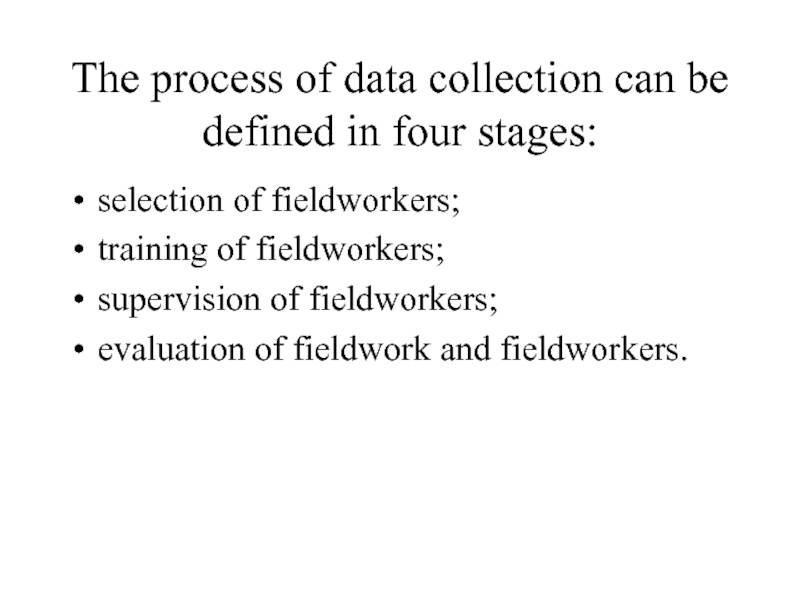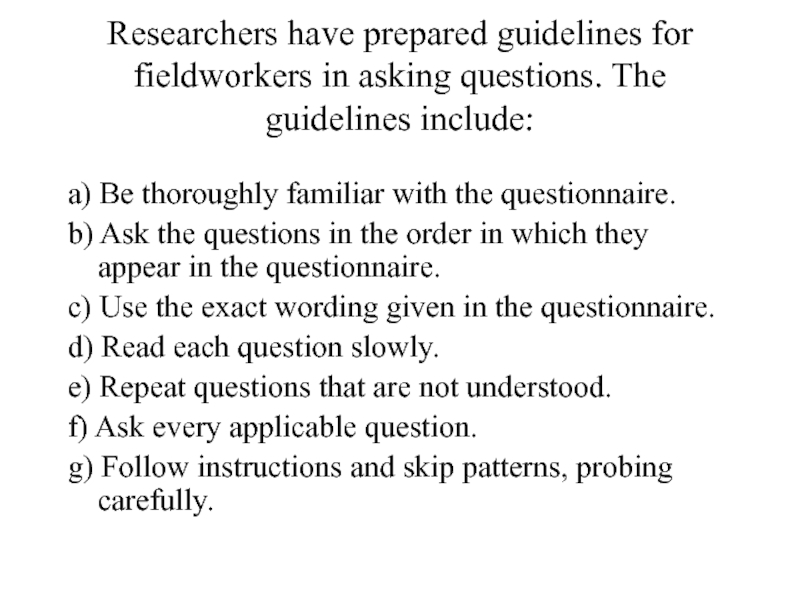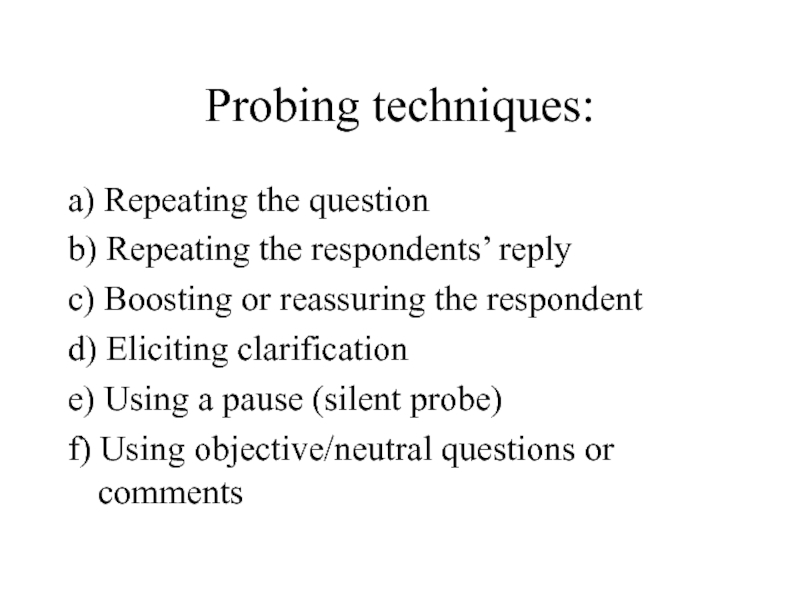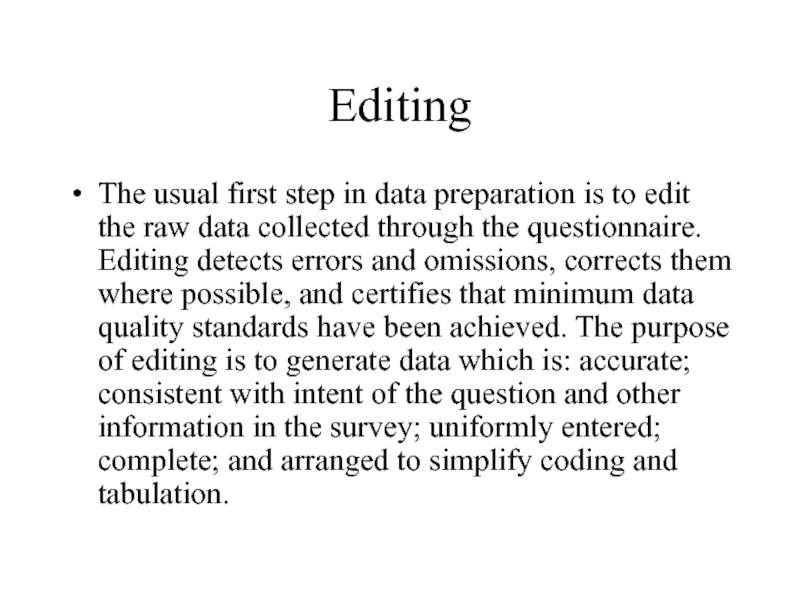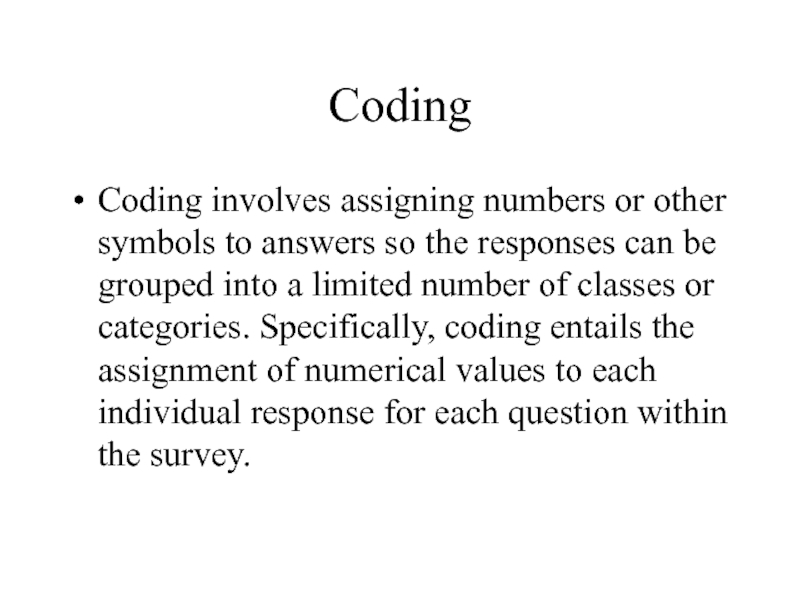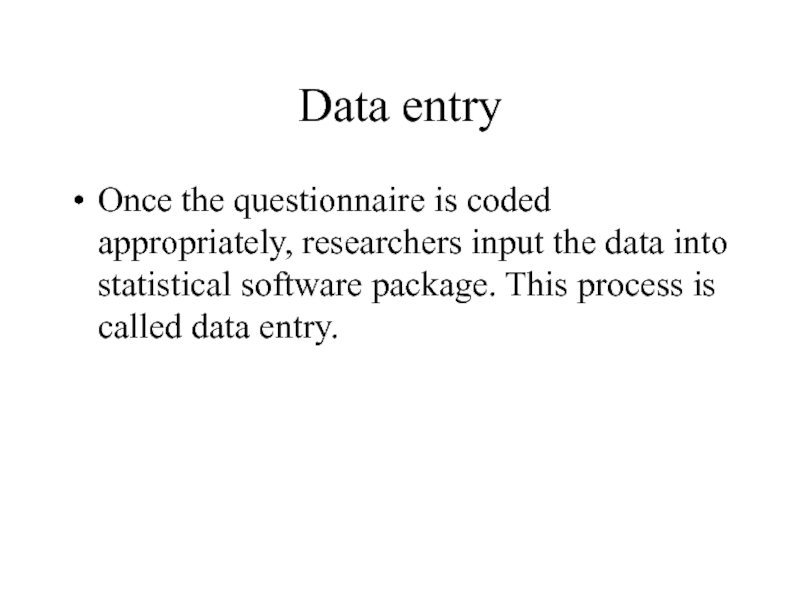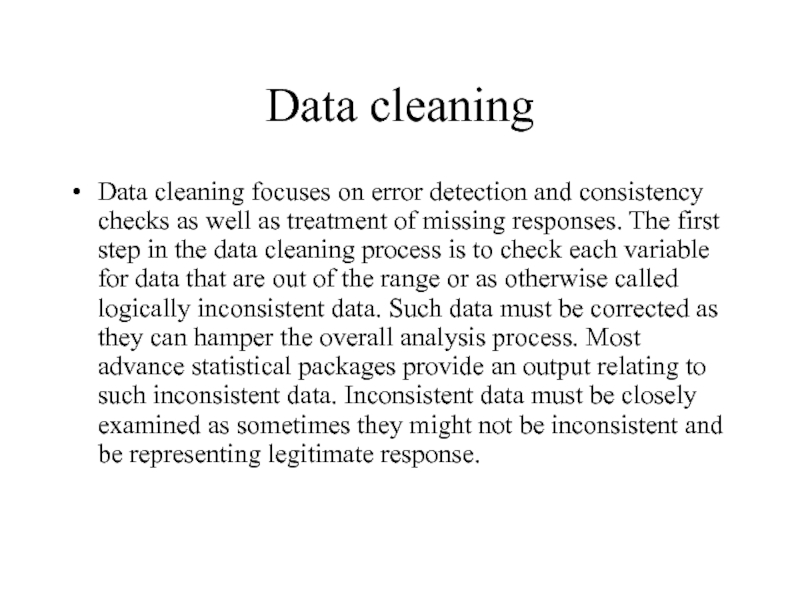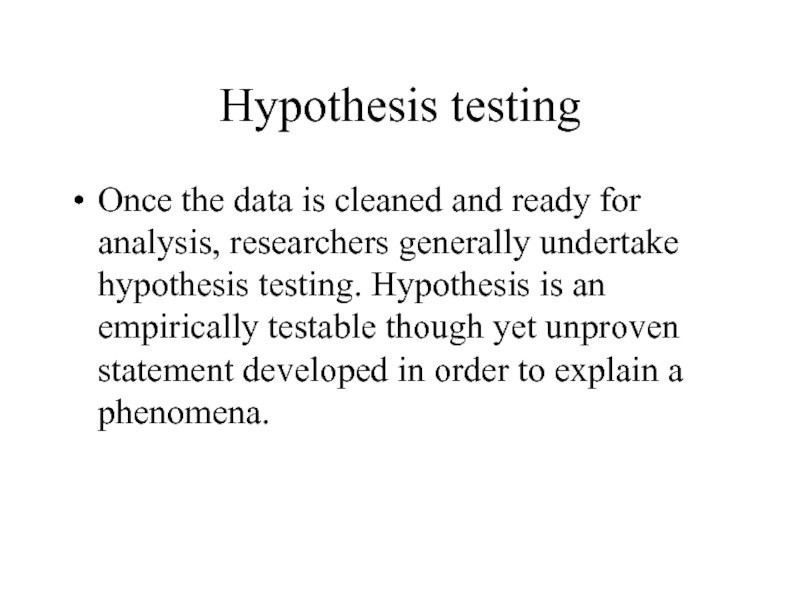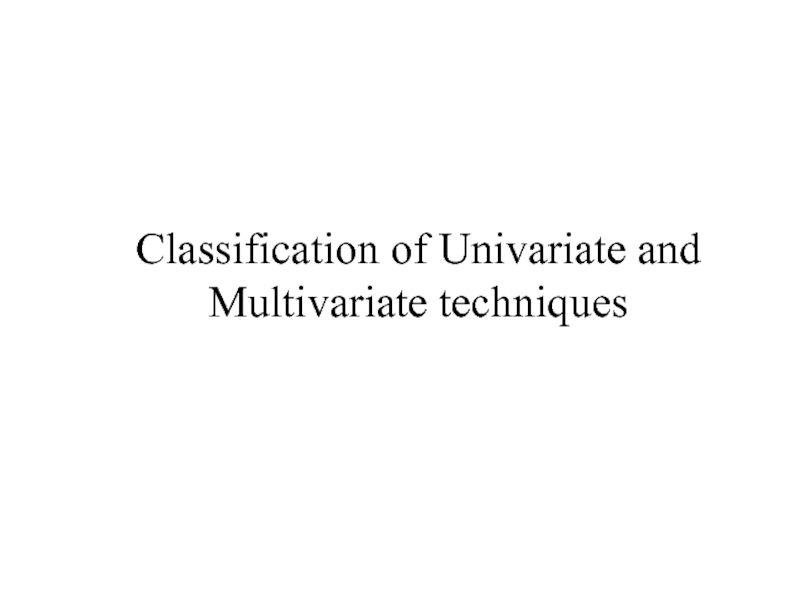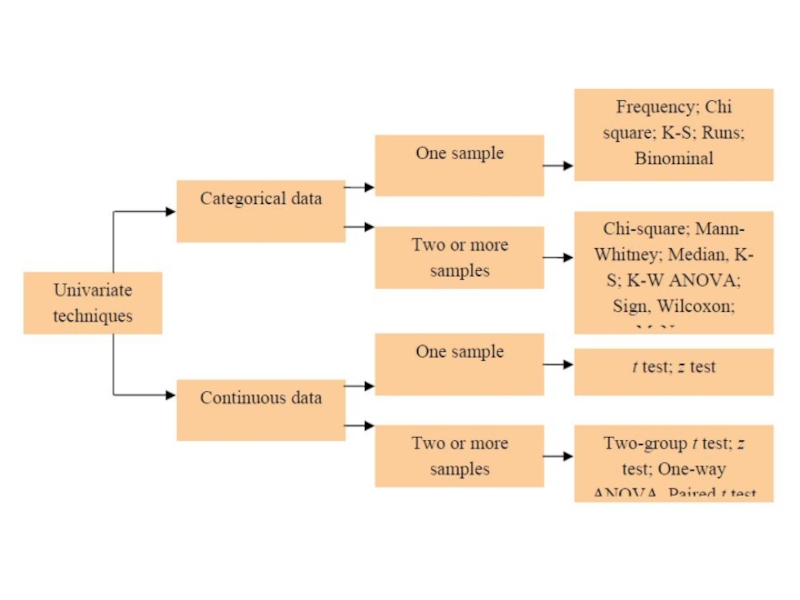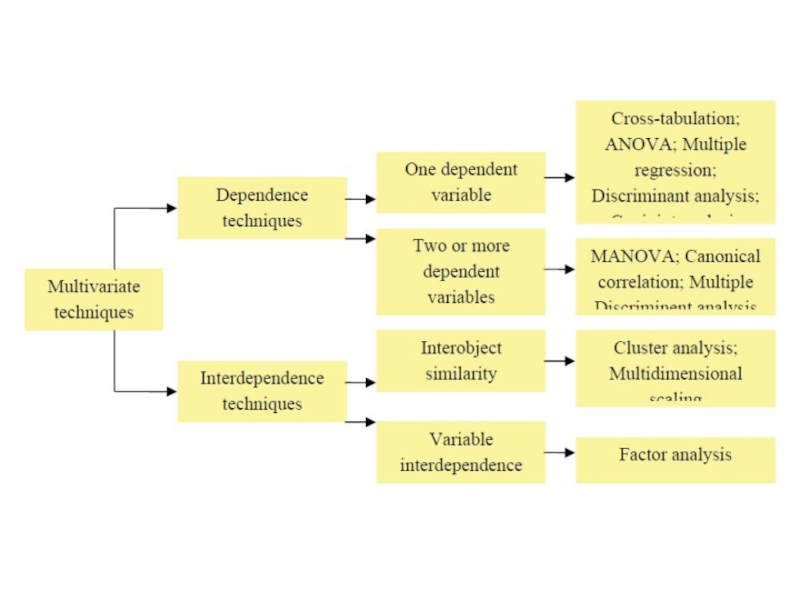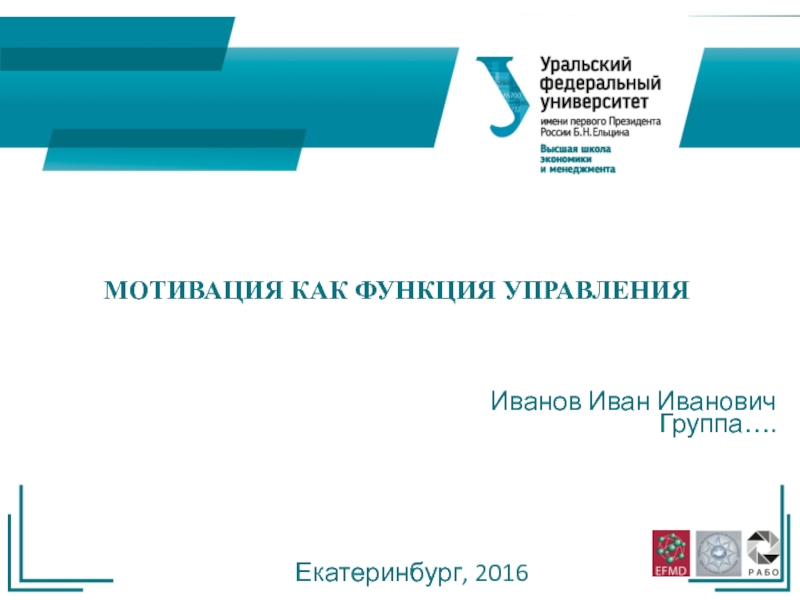- Главная
- Разное
- Дизайн
- Бизнес и предпринимательство
- Аналитика
- Образование
- Развлечения
- Красота и здоровье
- Финансы
- Государство
- Путешествия
- Спорт
- Недвижимость
- Армия
- Графика
- Культурология
- Еда и кулинария
- Лингвистика
- Английский язык
- Астрономия
- Алгебра
- Биология
- География
- Детские презентации
- Информатика
- История
- Литература
- Маркетинг
- Математика
- Медицина
- Менеджмент
- Музыка
- МХК
- Немецкий язык
- ОБЖ
- Обществознание
- Окружающий мир
- Педагогика
- Русский язык
- Технология
- Физика
- Философия
- Химия
- Шаблоны, картинки для презентаций
- Экология
- Экономика
- Юриспруденция
Data preparation and preliminary data analysis. (Charter 9) презентация
Содержание
- 1. Data preparation and preliminary data analysis. (Charter 9)
- 2. The process of data collection can be
- 3. Researchers have prepared guidelines for fieldworkers in
- 4. Probing techniques: a) Repeating the question b)
- 5. Editing The usual first step in data
- 6. Coding Coding involves assigning numbers or other
- 7. Data entry Once the questionnaire is coded
- 8. Data cleaning Data cleaning focuses on error
- 9. Hypothesis testing Once the data is cleaned
- 10. Classification of Univariate and Multivariate techniques
Слайд 2The process of data collection can be defined in four stages:
selection
training of fieldworkers;
supervision of fieldworkers;
evaluation of fieldwork and fieldworkers.
Слайд 3Researchers have prepared guidelines for fieldworkers in asking questions. The guidelines
a) Be thoroughly familiar with the questionnaire.
b) Ask the questions in the order in which they appear in the questionnaire.
c) Use the exact wording given in the questionnaire.
d) Read each question slowly.
e) Repeat questions that are not understood.
f) Ask every applicable question.
g) Follow instructions and skip patterns, probing carefully.
Слайд 4Probing techniques:
a) Repeating the question
b) Repeating the respondents’ reply
c) Boosting or
d) Eliciting clarification
e) Using a pause (silent probe)
f) Using objective/neutral questions or comments
